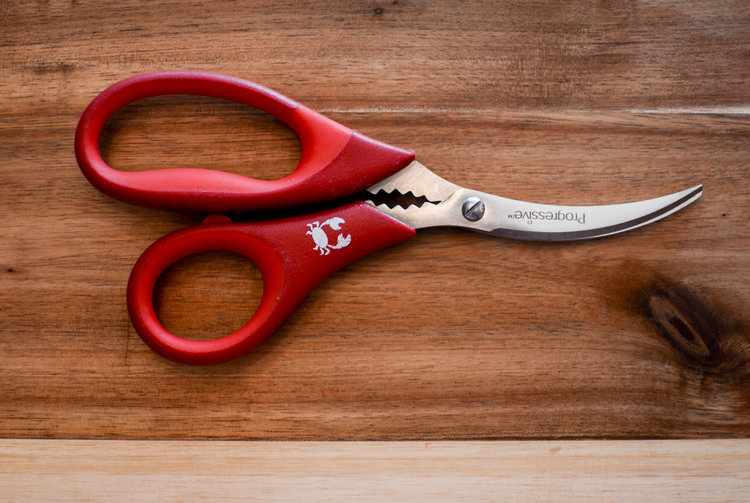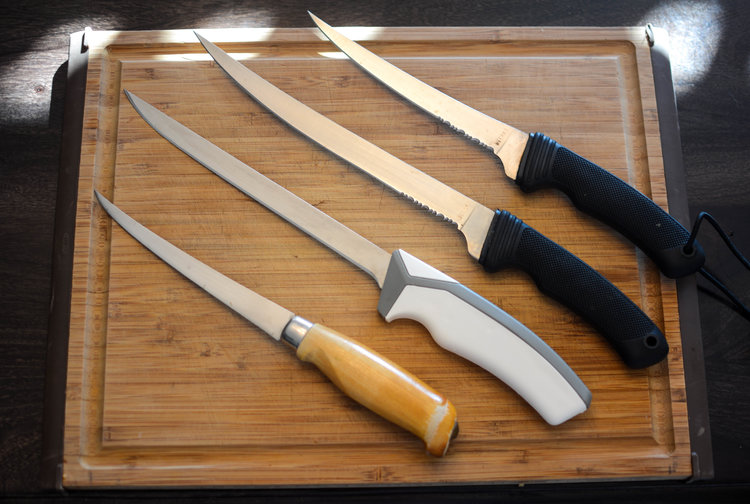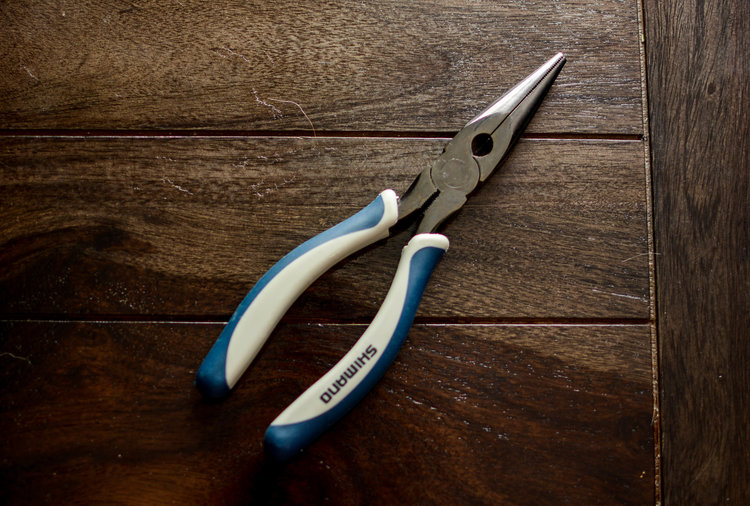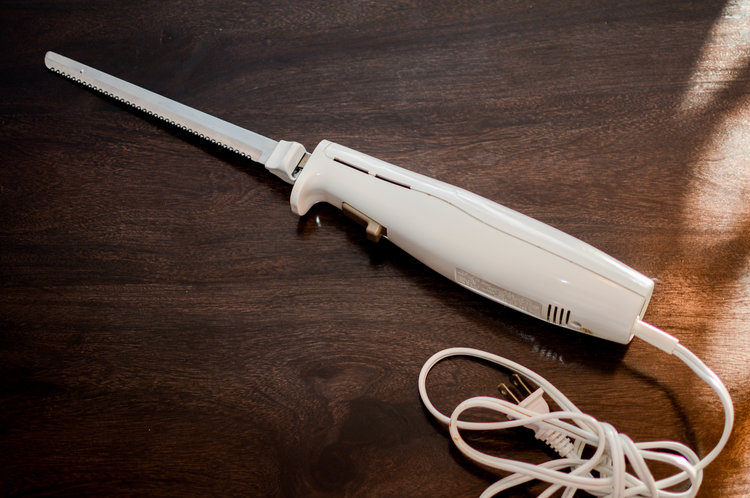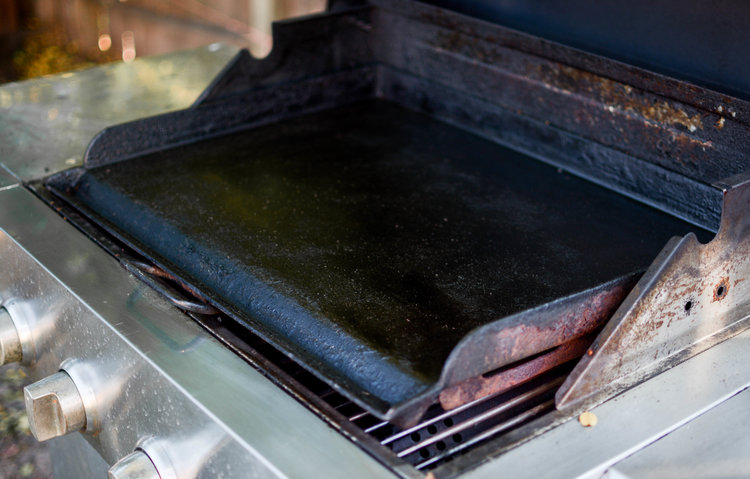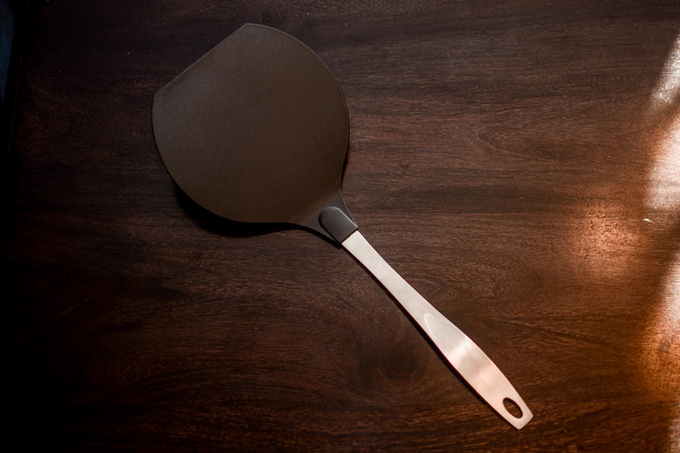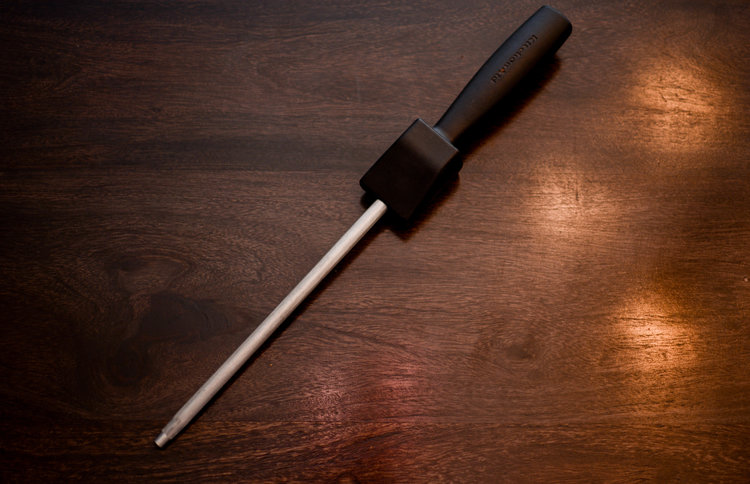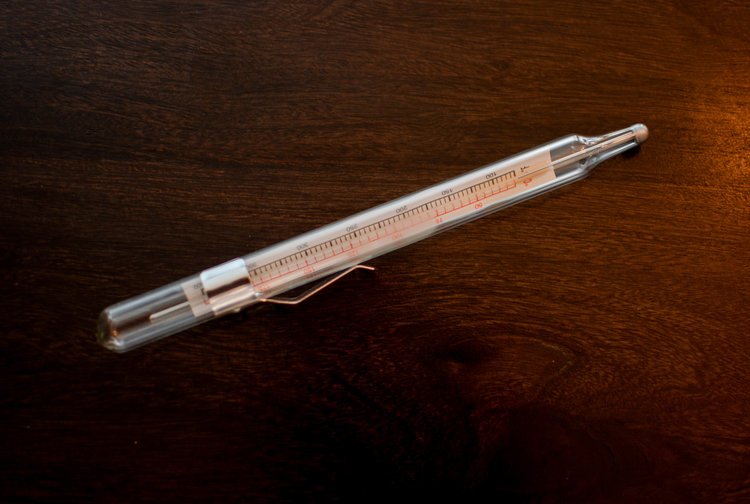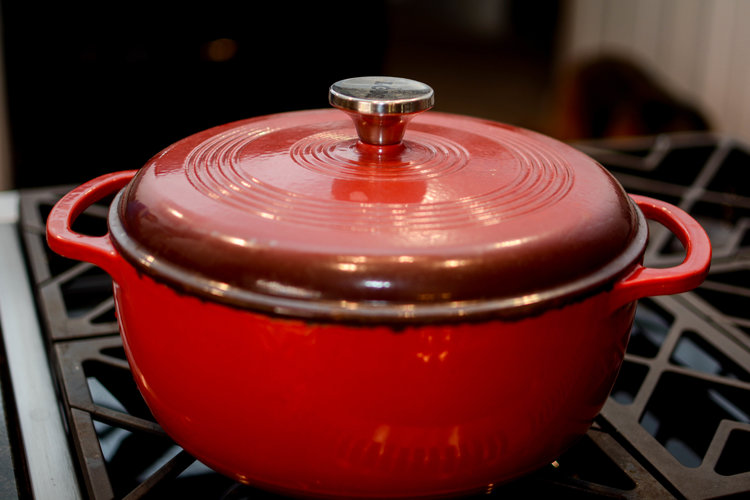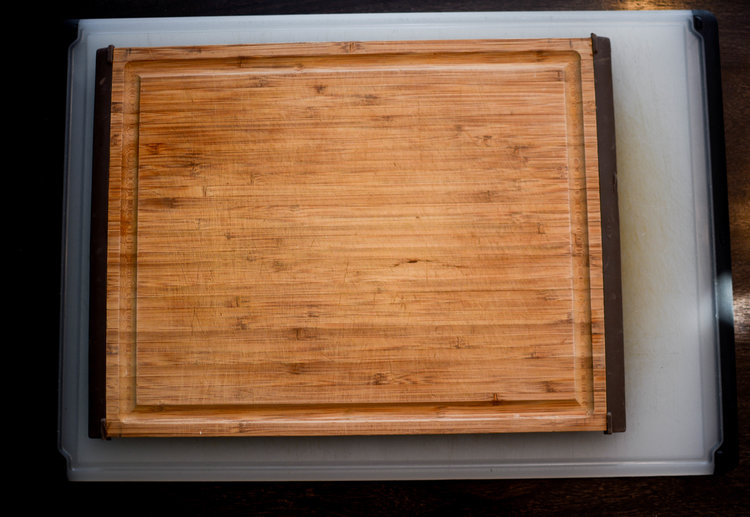Equipment for Seafood
Below, I’ve compiled a list of all the essential seafood tools and their uses.
Below, I’ve compiled a list of all the essential seafood tools and their uses.
_______________
CRAB SCISSORS
There are many ways to get into a crab. There are crab pliers, crab hammers, and crab picks. They all work to some degree, but I find that they all
have drawbacks. Crushing your crabs with a hammer requires a bit too much finesse and flings crab parts all over your kitchen. The only tool I use when processing crabs is a small pair of crab scissors. They are contoured
to fit into all the right places and they will cut cleanly through even the toughest parts of the crab. They have a crushing tool just behind the hinge point that allows you to grip the tougher joints and crack or separate them. This part is great to cleanly open the claw section. With this tool and a little practice, a crab can be picked clean in less than 10 minutes.
FILLET KNIFE
The most important tool required to produce professional looking portions of fish is a super sharp knife with a flexible blade. I keep a 6” and a 9” version. The 6” allows more control, but becomes challenging to use on larger fish. The 9” is great for large fish, but can be a little too flexible on firm fish regardless of size. If you only want to buy one, get a 9” knife and practice as much as you can.
NEEDLE NOSE PLIERS
These are necessary to prepare many types of small boned fish like salmon and trout. The bones of these fish are so small that a fillet knife will slice right through them. The fillets of these fish will contain a number of small pin bones that can frustrate you at the dinner table. The easiest way to get these bones out while doing minimal damage to your fish is with a small pair of pliers. You’ll want a dedicated pair for your kitchen. Use the pliers to grasp the end of the bone and pull straight up and out. Note, these are not dishwasher safe, so hand wash them and try to keep the joint as dry as possible to avoid rust.
ELECTRIC CARVING KNIFE
I’ll admit, I was a skeptic about this one at first, but there are a lot of situations where this makes sense for producing fish fillets. If you have a ton of fish to get through, the is the only way to go. If you are working with hard scaled fish like sheepshead or large snappers, this is the safest and easiest way to get through those scales. This tool works incredibly well for fish that are more round than elongated like tai snappers and pompano.
CAST IRON GRILL PLATE
This is a thick cast iron griddle that can sit on top of a gas grill. A well- seasoned cast iron plate is one of the most fantastic cooking surfaces that you will ever work with. It is indestructible, and nothing sticks to it. It is easy to clean and does a fantastic job of distributing the heat of the grill for perfectly even cooking. This is the perfect surface for blackening a fish. If you can’t find one of these, get the biggest cast iron pan you can find.
I’ve compiled a list of all the essential seafood tools and their uses.
WIDE SPATULA
This is one of the most affordable tools you can add to your kitchen, but it is extremely valuable for cooking delicate fish fillets. The width will allow you to flip fish while pan frying without the risk of breaking the fillets.
HONING STEEL
This is something that every home cook should use, every time any non-serrated knife comes out of the drawer. It only takes a few swipes along a steel to dress the edge. A sharp knife will allow you to produce a much prettier piece of fish and have a much more enjoyable time in the kitchen. A steel does not sharpen a knife. It only knocks down minor imperfections that develop on your knife edge at a microscopic level. It realigns the cutting edge for maximum cutting power. If the steel stops being effective, then the knife has lost its edge and it is time to sharpen it. I faithfully steel my knives with each use until they lose their edge and then I have them professionally sharpened. I usually get about 6 months from a new edge, but your mileage may vary depending on how much you use and or abuse them.
DEEP FRYING THERMOMETER
This is absolutely critical for deep frying fish, especially for the novice. Eventually, you may be able to eyeball the perfect frying temperature for your oil. Until then, use a good thermometer to keep you in the sweet spot, from 350-375 degrees with 360 degrees as your ideal number.
DUTCH OVEN
These can be expensive, but they last forever. You can put them on the stovetop or in the oven and the thick bottom will help with even cooking regardless of the type of stove you have. They are great for deep frying, braising, and poaching. They hold heat well, so your liquids can quickly return to a boil after you dump in cold shellfish or fish fillets.
LARGE CUTTING BOARD
You probably have a few cutting boards in your kitchen, but you may not have one large enough. I prefer one at least 12”X18” with a groove around the edge to prevent liquids from escaping. The reason it needs to be big is so that you can comfortably maneuver whole fish. When I fillet a fish, I like the cutting board to be about 1 ½ times the length of the fish. Nothing irritates my wife more than when I slap a big whole fish on the cutting board and the head or tail hangs off onto the kitchen counter. The more you contain the mess on the front end, the less scrubbing you’ll have to do after.

